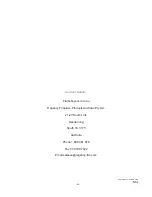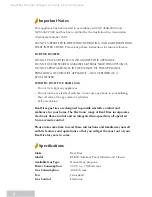
-13-
•
Turn the knob clockwise to the minimum burner setting and check the minimum burner pressure against
the data plate. Adjustment is made using the Burner Low Pressure Set screw on the front of the gas
control.
•
Push the knob in and rotate clockwise until the burner and pilot are extinguished
•
Remove the manometer and check all connections and test points for leaks using a soapy solution.
•
Proceed to the section on Trim Installation (page 14)
Aeration Sleeve Details
It is important that the correct aeration sleeves are used for each gas type and burner media. The fire should
have been supplied with the correct aeration sleeves. If the fire is to be set up on propane with pebbles or
crystals then the sleeves supplied with the burner media need to be fitted. Refer to the notes supplied with the
burner media and the chart below for more information.
Pilot Burner Performance
When operating at its best, the pilot burner will produce a sharp blue flame with a light blue inner cone. This
inner cone should reach across to the flame rod (or thermocouple) and slightly beyond. The size of the pilot
flame can be adjusted using the screw on the front of the manual gas control but cannot be adjusted on the
electronic version.
Signs of abnormal pilot operation could be:
•
A very short flame that does not reach across to the flame rod (or thermocouple).
This
could be due to a reduced inlet pressure or a blocked pilot injector
•
A very long flame that reaches far beyond the flame rod (or thermocouple).
This could
be due an incorrect pilot injector
•
A roaring noise when the pilot is operating or the flame “lifting off” from the pilot head.
This could be due to too high an inlet pressure
•
Long yellow flames.
This could be due to blocked
primary
aeration of the pilot
Any one of these conditions could affect the performance of the fire (failure to rectify, failure to hold the gas
control open, soot build up on flame rods or thermocouple, etc) and should not be left unresolved.




























